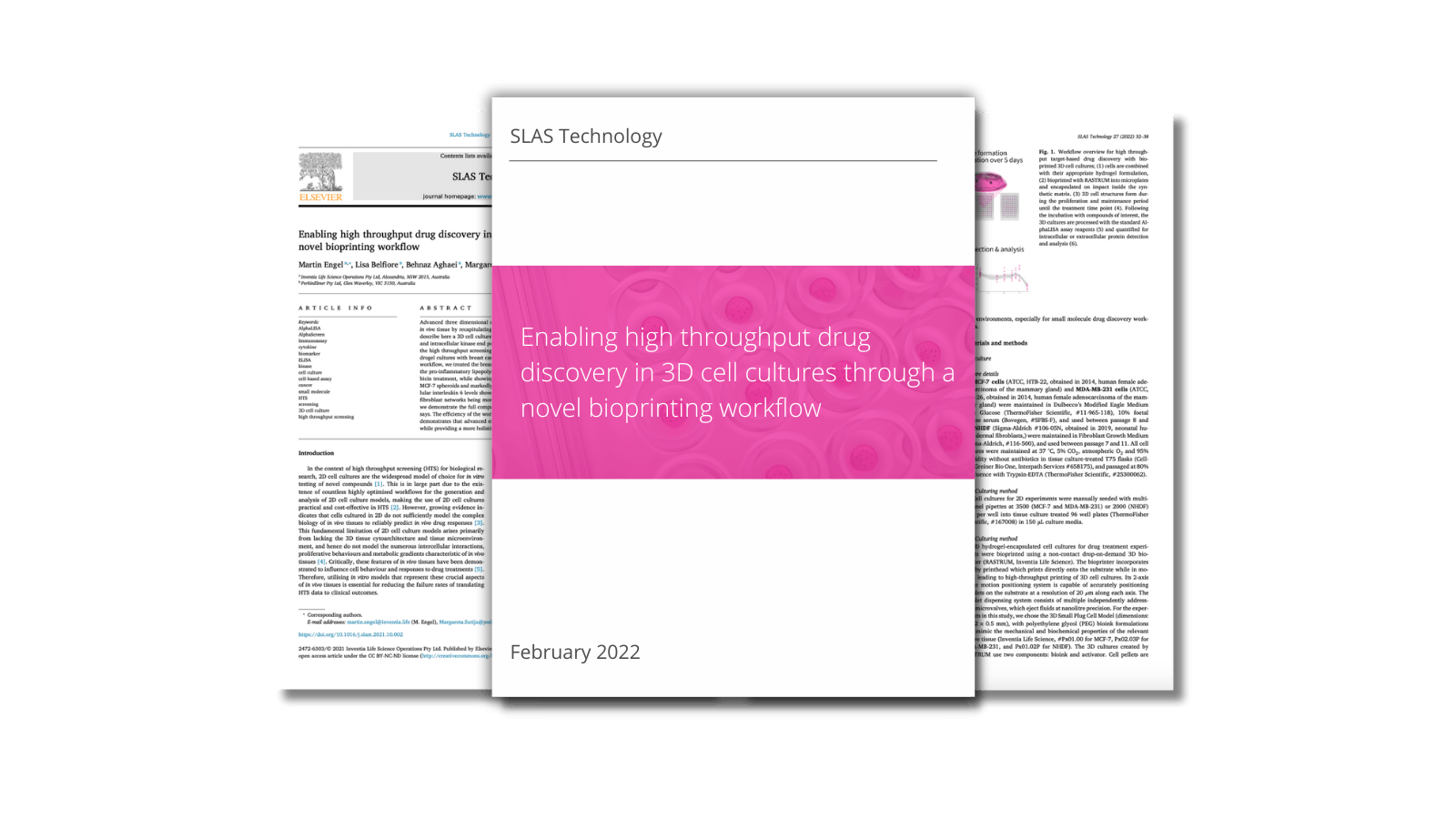
Enabling high throughput drug discovery in 3D cell cultures through a novel bioprinting workflow
Abstract
Advanced three dimensional cell culture techniques have been adopted in many laboratories to better model in vivo tissue by recapitulating multi-cellular architecture and the presence of extracellular matrix features. We describe here a 3D cell culture platform in a small molecule screening workflow that uses traditional biomarker and intracellular kinase end point assay readouts. By combining the high throughput bioprinter RASTRUM with the high throughput screening assay AlphaLISA, we demonstrate the utility of the protocol in 3D synthetic hydrogel cultures with breast cancer (MDA-MB-231 and MCF-7) and fibroblast cells. To establish and validate the workflow, we treated the breast cancer cultures with doxorubicin, while fibroblast cultures were stimulated with the pro-inflammatory lipopolysaccharide. 3D and 2D MDA-MB-231 cultures were equally susceptible to doxorubicin treatment, while showing opposite ERK phosphorylation changes. Doxorubicin readily entered embedded MCF-7 spheroids and markedly reduced intracellular GSK3β phosphorylation. Furthermore, quantifying extracellular interleukin 6 levels showed a very similar activation profile for fibroblasts in 2D and 3D cultures, with 3D fibroblast networks being more resistant against the immune challenge. Through these validation experiments we demonstrate the full compatibility of the bioprinted 3D cell cultures with several widely-used 2D culture assays. The efficiency of the workflow, minimal culture handling, and applicability of traditional screening assays, demonstrates that advanced encapsulated 3D cell cultures can be used in 2D cell culture screening workflows, while providing a more holistic view on cell biology to increase the predictability to in vivo drug response.